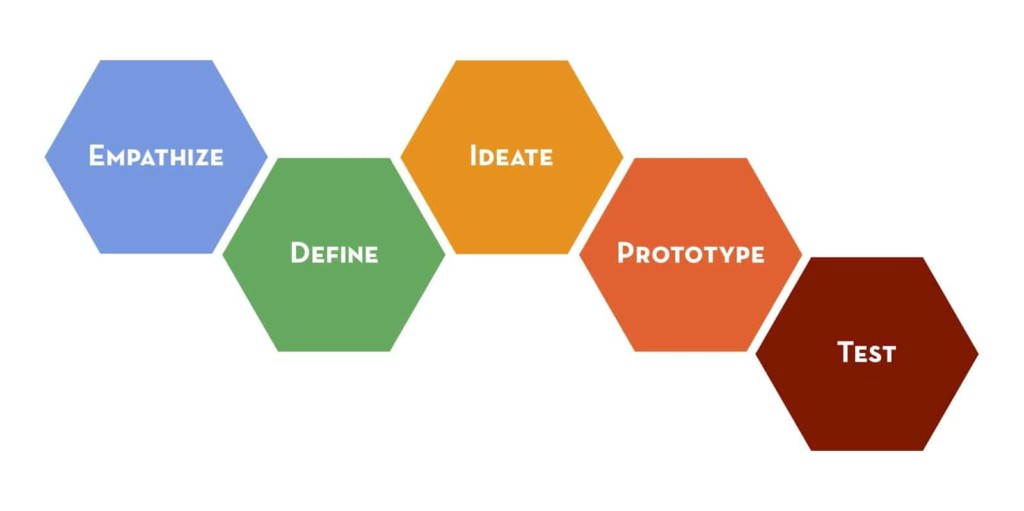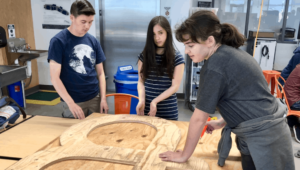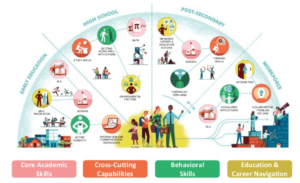Design as an Act of Service

Growing up in Denmark in a multifaceted community of artists, designers, and engineers, Rie Nørregaard was immersed in design. She gained graphic design skills at the Danish School of Media & Journalism.
After a decade of jobs as creative director, Nørregaard joined SYPartners (@SYPartners), a San Francisco “consulting firm that behaves like a design firm.”
Rather than focusing on fixing the past, SYPartners is obsessed with new and better ways forward. They help clients imagine better futures and use design as a tool.
She’s a fan of the Stanford d.School and appreciates their K-12 effort to create more equitable environments where students are seen, belong, and feel safe. (Listen to Rie’s conversation with d.School’s Laura Mcbain here.)
Nørregaard sees young people benefit by collaborating and gaining empathy in a design process. “You also learn how to change your mind rather than seeking that which affirms your beliefs.”
Being a long time parent at City & Country School in New York, she’s learned to value exploration, experimentation and design in elementary schools.
SYPartners uses a methodology similar to the Stanford d.School (below). She and her colleagues use a variety of design tools and facilitation techniques depending on the situation.

“Every human, every organization, every situation is unique,” said Nørregaard. “We go in and look with fresh eyes and an open mind.”
Nørregaard approaches design as an act of service. “Design is on behalf of others, of service to others,” said Nørregaard, “whether one to one or considering the effects of decisions on the bigger scale.
Working at a design shop like SYPartners means a constant change. They assemble diverse teams with diverse design skills needed to solve a problem– graphic, narrative, information, interaction, or experience.
SYPartners works with Fortune 500 companies like Starbucks. After a racial incident at a Philadelphia store, SYPartners helped the company design a response including a curriculum for employee conversations.
Every engagement is an exploration of complexity–big companies, complicated structures, systems that seem stuck. Using a design process, SYPartners investigates purpose, how to clarify it and live with it.
With increasingly complex systems, Nørregaard sees design thinking becoming even more important. “It’s a shared language, a way to zoom in and out at the same time, to look at needs and generate empathy, understand implications for individuals as well as society.
Rie hosts the new SYPartners podcast, Designing for Humanity, where she investigates design applications that result in inclusive solutions.
To learn more about design and design thinking, she recommends David Kelly’s course from IDEO U, Hello Design Thinking (or the free Crash Course). There are also some useful tools on the SYPartners site (above).
Key Takeaways:
[:18] About today’s episode with Rie Nøorgaard.
[1:20] Tom welcomes Rie to the podcast.
[1:33] The origin story of Rie’s interest in design.
[2:38] Rie’s experience at the Danish School of Media and Journalism.
[3:17] About Rie’s role at SYPartners.
[4:13] Is it more of a structured process or a set of tools that SYPartners brings into every engagement with each client or partner?
[5:45] What SYPartners’ tools look like in terms of structuring a conversation or designing an experience.
[6:37] What it’s like to work at SYPartners; a typical day for Rie at work.
[9:39] Does SYPartners have a number of clients and partners at one time?
[10:17] The kinds of organizations that Rie works for and the kinds of transformations she’s helping them to achieve.
[13:02] Rie explains the complexity of transformation.
[14:54] Are design and design thinking becoming more important?
[17:13] Rie’s thoughts on how and where design could be incorporated into schools (particularly secondary schools.)
[20:58] What does “design being an active service” mean to Rie?
[22:37] The purpose and goal of Rie’s Designing for Humanity podcast.
[25:56] Online resources Rie recommends for learning more about design and design thinking.
[27:26] Where to learn more about Rie and SYPartners online.
Mentioned in This Episode:
Danish School of Media and Journalism
SYPartners
Designing for Humanity Podcast
Stanford D.School
IDEO U
Hello Design Thinking by IDEO U
Designing for Humanity: Do we need a new design frame?
For more design podcasts see:
- Building Transferable Skills: Design Tech High at Oracle Campus
- What’s Up With All the Design-Focused Schools?
- Design Thinking as Pedagogy For Students and Educators
- Design Thinking and its Impact on Education Innovation
Stay in-the-know with all things edtech and innovations in learning by signing up to receive the weekly Smart Update.






Patti Shade
“ . . . learn how to change your mind rather than seeking that which affirms your beliefs.” If only, as teachers, we could impart this mantra in all our students . . . a world where empathy and creativity abound.